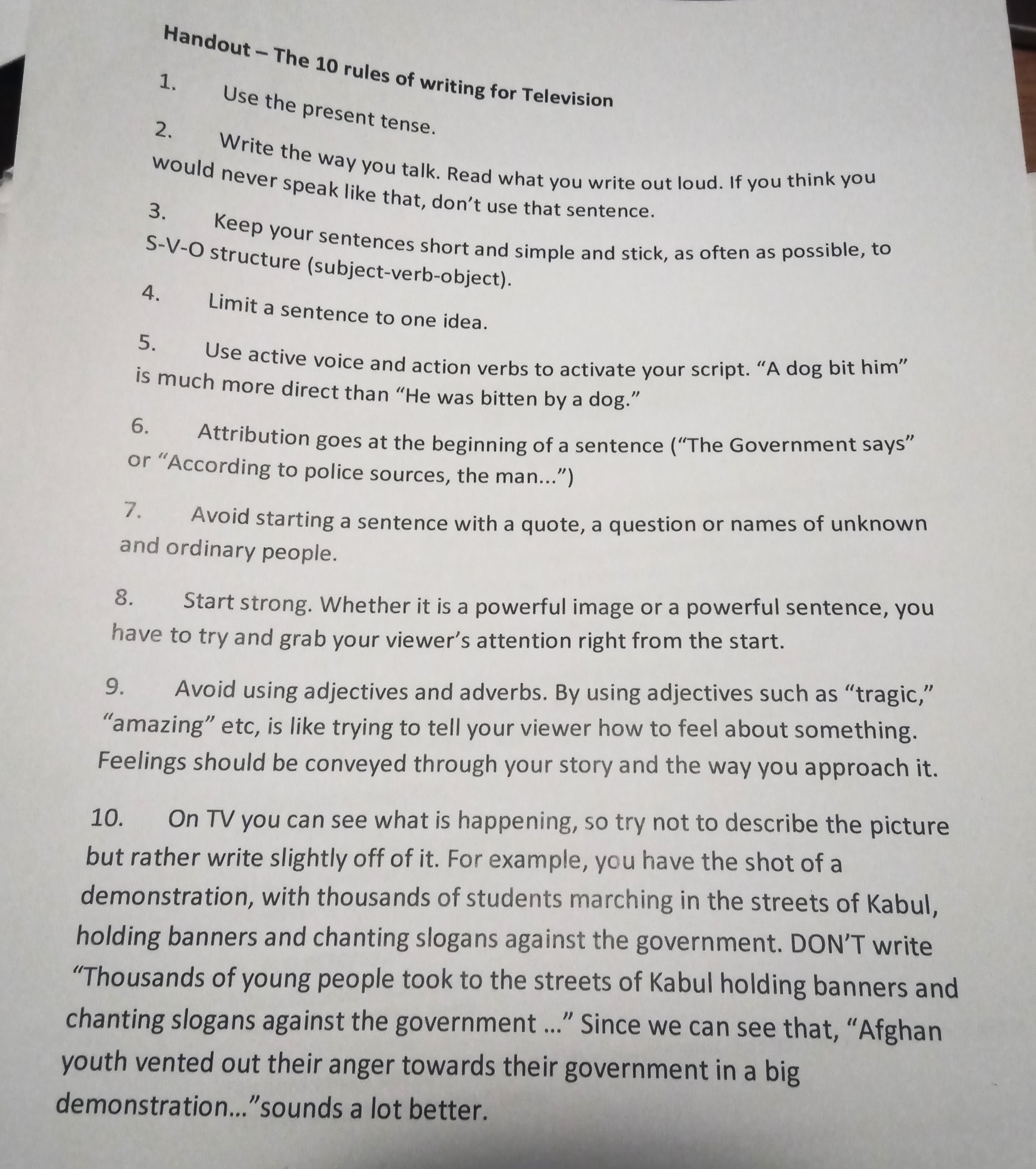Found this — The 10 Rules of Writing for Television — while going through some papers. This is mainly about TV news, but also relevant to current affairs and docos. Writing for radio/podcast is similar, too, but that requires lots of describing things that can't be heard.

